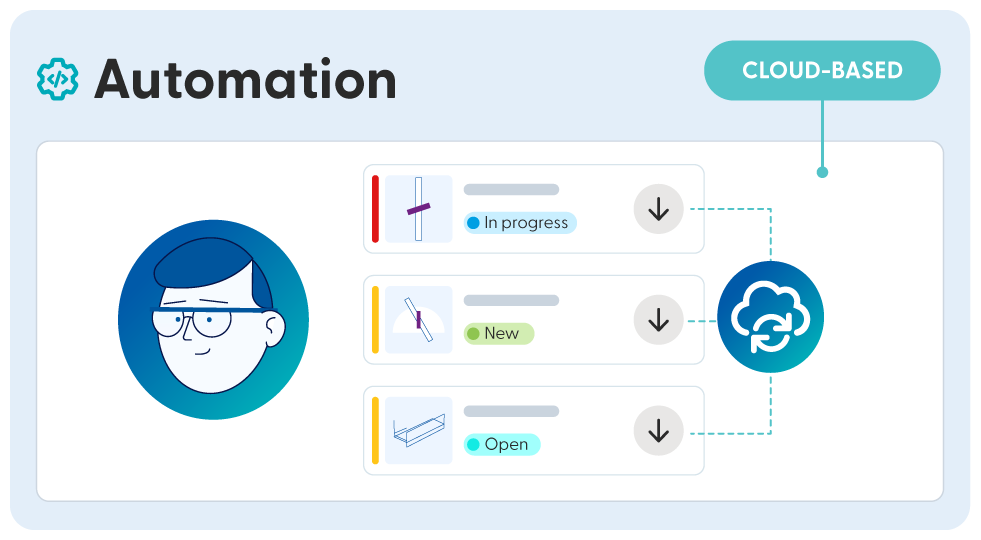Vous devez activer les cookies pour accéder à ce site.


The project Kick-off meeting is sometimes the first opportunity that everyone has to talk to each other. And there’s lots of things to discuss. But the project started way before the kick-off and lots of information has already been generated.
Many organizations will have a communication plan for how they will document project status and track milestones and budgets. But does your team have a Project Information Management (PIM) Plan?
What’s often overlooked is a plan for what information needs to be shared by whom, to whom, when, and how. And hammering it out as early as possible in the project is key.
Take for example, the question of the building information model (BIM):
These are the types of questions that should be included in a PIM plan. By getting buy-in early, each specialty can provide insight into the project’s constructability, improving efficiency and collaboration from all parties. This also allows for early planning of the actual construction process, which all begins by setting expectations up front on how information will be used.
“It is not only trust, but also expectations. If you know at the beginning of the job that I’m handing this over to the contractor and I’m handing it over to the owner, you know that there are certain aspects that have to be in alignment with their expectations of how they’re going to use it.”
Donovan WattierHDR
Start by understanding the role that email communication plays in communication delays. Emails can be slow, they can get easily lost, and they can be misinterpreted.
Your team also ends up introducing communication bottlenecks when they can’t find the information they need to answer a fellow stakeholder’s question.
But given that email is still a primary communication vehicle, focusing on improving it can lead to immediate results.
It’s a pretty simple concept. Get your project email out of siloed individual email inboxes. When your team files the email to a central location for the project, everyone on the team can then access this information, regardless of who it was sent to. If you are out of the office, your colleague can respond to the email for you. And the beauty of filing all emails to the project is that all emails can then be searched.
Everyone on the project team should be able to find the information they need, when they need it. But different projects might have distinct approaches to data organization. If you standardize how the information will be filed across your firm, your teams will be able to respond quicker.
Email and file management are the basic communication and collaboration elements of a PIM plan. If you can get these two things organized and under control, you’re bound to eliminate costly bottlenecks.
Collaboration is hindered if each stakeholder group is using a different software or platform, causing information silos to develop.
For example, the architect firm may be using authoring software for design, while the engineering team is using clash detection software, and neither of these applications can speak to the other easily. So collaboration usually means exporting the models and working separately. Meanwhile, changes are still being made by the architects, while the engineers are busy checking for clashes in an outdated model. This can lead to needless mistakes and lots of frustration.
But this goes beyond design. What about construction administration? The general contractor could be using one system to generate submittals and RFIs, while the architect uses a different system for the review and response process. If stakeholders want to adopt the software the other one uses, then they are forced to download and re-enter information across systems, which can introduce delays and errors.
By using our Procore Connector, the number of steps needed to process each RFI or submittal is cut back, which saves up to 12 minutes of work per action.
As a process, BIM is the best approach to coordination of any AECO project, and BIM coordination platforms allow you and your teams to unite the information they’re working on across the applications they’re using.
There are options available today to automate the transfer of information between systems. For example, if you use a Project Information Management (PIM) platform that uses a Microsoft Outlook add-in, you could auto-populate your submittals and RFIs directly from an email. This streamlines your work and saves you and your team from having to download attachments and re-enter data into your system.
Many of our colleagues in the AECO space try to keep their daily “to-do” tasks in their own way: some use email and calendar reminders, some use shared spreadsheets, some use action item logs…
But AECO projects require so much interdependence that there’s no real visibility of what’s going on outside your four walls. So tasks can get done by one team, and until the weekly meeting comes around, it’s unlikely that everyone will know it’s been accomplished (and we all know that those meetings are long enough already!).
If everyone is working off the same list, knows who’s responsible for what and when, and can see the most up-to-date status, then trust and accountability are much easier to build.
If you and your team is being made aware of updates immediately, you can be sure that when the ball’s in your court, you won’t make unforced errors.
If your team can comment back and forth on action items directly in their everyday software – and anyone can view the action item details – then you can avoid the slow pace of traditional email communication while maintaining an easier project record.
-
Trusted by
Information Management
Reduce Project Delays
See how Newforma's Outlook Add-In can help AEC firms improve project communication and, by extension, construction project efficiency.
Read post



